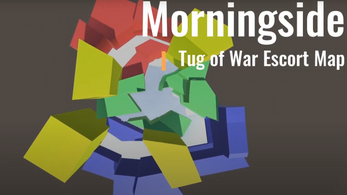Overwatch Push Map Concept
My aim with the project was to produce a concept level for the new Overwatch game mode “Push”, where two teams vie for control of a robot to push their objective into the enemy team’s territory.
I had a couple of goals in mind for this project:
- I wanted the map to be thematically linked to the new Tank hero concept that I designed previous to this project: Big John.
- I wanted the map to be asymmetrical to convey the narrative justification for the gameplay and to express a sense that there were two meaningfully distinct sides fighting one another for territory.
Narrative Concept
The level is set in Overwatch’s future version of Morningside, a real-world borough of Edinburgh, Scotland. In my interpretation of this setting, Morningside has developed into an urban downtown area of Edinburgh and become a financial hub to rival the City of London.
Morningside has become an area of proxy conflict for pro- and anti-Omnic forces, tying into my idea of Big John as a pro-Omnic element.
The gameplay takes place between two teams each positioned at different ends of the borough: one team from the old downtown fighting for control and the financial district, and vice versa.
Look and Feel
I’ve blocked out the core structure of the level, which would be divided into 3 visually distinct areas with further work.
The overall look of the level would merge the solid brick architecture that old British cities like Edinburgh are known for with the bright and shining style seen in Overwatch maps like Numbani and Busan. One existing example of this combination that I drew inspiration from is Toronto, Canada. The skyscrapers in the Morningside level would be closely modelled on the One Yonge complex in Midtown Toronto.
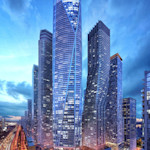
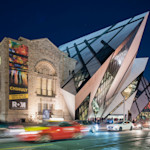
The Shopping District at the centre of the level is all pretty lights and advertisements. Department stores and shopping malls frame a central plaza, from opposite sides two restaurants serve as spawn rooms, and alfresco dining tables line the sidewalk. The main shopping centre would be modelled after the Royal Ontario Museum in Toronto, where the older style of building is disrupted with a glass Art Deco annexe. Passageways and stairs lead away from the plaza into the largest of the malls, poorly kept alleyways offer shortcuts into other parts of town.
Downtown Morningside is the oldest part, closest to Edinburgh proper. It combines the visuals of classic limestone townhouses with post-war tenement buildings, but it is run down. At street level, trash piles up on the corners, and cars are parked up on the curb. The storefronts are mostly shuttered or boarded up, with pro-omnic graffiti sprayed on every available surface. published
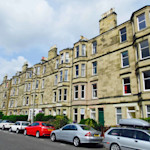
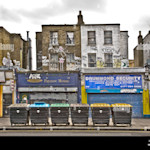
The Financial District is home to Edinburgh’s rich and powerful. Accountancy and law firms take up their work in shining highrises, interspersed with squat, yet sophisticated apartment buildings. Balconies line the main street, which is kept clear of detritus, but lined with trees on one side.
Reflection
I designed this level before Overwatch 2 was released and before I fully understood the gameplay design of the “Push” game mode. On playing the new mode I picked up on a few key differences between Blizzard’s level designs for the game mode and what I had come up with:
- I’ve placed spawn rooms at the centre of the map directly in front of the initial objective. In the game they are positioned behind the final checkpoint each team must defend. When I designed the level I expected that the potential for back-and-forth control of the robot might cause games to drag on, so I wanted to remove some of the travel time for players to compensate.
- In situ, this design would probably deny a team that’s about to lose the opportunity to reach the objective in time to contest, so going forward I would move the spawn rooms into or adjacent to the skyscrapers at either end of the route.
- Blizzard’s designs are very symmetrical. The reasoning for this is obvious, as it ensures balance in a game mode where both teams have the same goal. The existing “Control” game mode maps are the same, so I should have seen this coming.
- That said, one of the key points Blizzard made when Overwatch 2 was announced was a greater emphasis on the story. I tried to account for this by designing the level with a narrative justification for the gameplay to be set there, and I thought it was important to have distinct and asymmetrical sides.
- I think there’s room for compromise between both approaches, making the structure and layout of the level symmetrical while giving each a unique visual identity.
| Status | Prototype |
| Category | Other |
| Platforms | HTML5 |
| Author | disasterisk_dev |
